Prostate disease is one of the most common and dangerous diseases affecting men over 40 years of age.At first, the patient may not even realize there is a problem, but over time, symptoms will appear.If you do not consult a doctor in time, prostatitis will become chronic and complications may arise.Depending on the severity, cause and nature of the course, different types of prostatitis are distinguished.
Types of prostatitis according to form of appearance:
- spicy;
- chronic;
- potential.
What type of prostatitis occurs due to:
- Herpetic;
- bacteria;
- calculate;
- stagnation;
- infectious;
- purulent;
- chlamydia;
- mushroom;
- gonorrhea;
- fiber.
Classify
Faced with such an unpleasant disease of the genitourinary system as prostatitis, many men wonder why prostatitis occurs in them.
Understanding the cause of the disease helps in accurate diagnosis and promotes effective prevention.
According to the flow form
According to the form of its course, prostatitis is divided into acute, chronic and latent, among which prostatitis, follicular and parenchymal (purulent) are distinguished.
The following forms of the disease are distinguished:
- When suffering from catarrhal prostatitis, the male body will experience urinary disorders and discomfort in the pubic area.This is the most common type of acute prostatitis.
- Cystic prostatitis is characterized by symptoms such as pain in the groin or anus, increased body temperature, and severe urinary problems (dysuria).In more severe forms, when the patient delays seeing a doctor, there will be acute pain and urinary retention when urinating.
- Parenchymal prostatitis - an abscess containing pus that forms in the body of the prostate.In this case, fever appears, sharp pain accompanied by the feeling of frequent urination.Temperature increases to 39–40 °C, defecation becomes almost impossible.
Acute prostatitis
Acute prostatitis is an inflammation of the prostate gland that occurs over a short period of time and has many different symptoms.Swelling of the gland occurs due to the negative effects of pathogenic microflora.Pathogenic bacteria disrupt the integrity of tissues, causing constant discomfort in the pelvic area even at rest.
There are several preferential routes for infection to enter the prostate:
- for proctitis - lymphatic pathway;
- after infectious diseases - blood sugar;
- directly through the urethra - tube.
Excessive accumulation of substances in the prostate creates favorable conditions for bacteria to multiply, causing many different complications:
- abscess;
- prostate adenoma;
- prostate cancer;
- lapse;
- infertility.
Symptoms of prostatitis are so painful that the patient is forced to urgently see a doctor for help.If not done promptly, prostatitis will become chronic and much more difficult to cure.Antibacterial therapy combined with immune system-boosting drugs will effectively fight disease.
Chronic prostatitis
Symptoms of chronic prostatitis are often detected based on blockage in the prostate, due to an untreated acute disease.Usually occurs in men over 50 years old who do not seek help and self-medicate.Many of them experience complications due to comorbidities.In addition, at this age, not everyone is fully sexually active, causing secretions to thicken and stagnate in the prostate, leading to dysfunction.Interrupted sexual intercourse also causes fluid retention.According to modern research, about 40% of people with symptoms of chronic prostatitis have erection problems.
As a rule, chronic prostatitis has mild symptoms that appear only when there is an exacerbation.The patient reported a dull pain in the groin area that increased after exercise and at the end of the day.Often the pain radiates to the lower back, scrotum and perineum.Frequent urination, especially at night, intermittent flow and tortuous flow.
Sexual intercourse becomes less prolonged, incomplete erection is noted, and sometimes there is pain in the head of the penis.Infertility is common in people with chronic prostatitis;Impotence practically does not occur at this stage of the disease.Sometimes there is a change in the color of the genitals;Due to poor blood circulation, they turn purple.
Each symptom of prostatitis will get worse if left untreated.This condition is similar to the manifestations in the acute phase of the disease.Weakened immunity, stress, neglect of diet, bad habits - all this leads to a worsening and worsening of the condition.
Most often, the chronic form leads to the appearance of symptoms of diseases such as cystitis, kidney disease and adenoma.The risk of urinary stones and malignant tumor formation is increased.Often the actual pathological process is asymptomatic and is discovered completely by chance during tests related to another disease.
Due to appearance
There are many reasons that provoke the development of prostatitis due to infectious and non-infectious causes, as well as predisposing factors.Due to their appearance, the following types of prostatitis are distinguished:
- bacteria;
- calculate;
- stagnation;
- infectious;
- pus.
Sedentary lifestyle, frequent hypothermia, rare sexual activity, interrupted sexual intercourse, smoking, alcohol abuse, stressful conditions - all these circumstances affect the stagnation of secretions in the vessels of the prostate and the vessels located next to it.Prostatitis is classified into many types depending on the cause of its appearance.
Bacterial prostatitis
Bacterial prostatitis is caused by bacteria entering the prostate in a variety of ways.This can be one type of bacteria or a group of bacteria.The disease can be caused by:
- mushroom;
- gonorrhea;
- Koch bar;
- chlamydia;
- many types of bacteria at the same time.
The inflammatory process is often associated with the invasion of bacteria caused by sexually transmitted diseases into the prostate.Chaotic sex, frequently changing partners and not using protection will lead to diseases such as gonorrhea, chlamydia, and fungal infections.In addition, the development of pathology is facilitated by a decrease in immunity due to interruptions in work and rest.Bad habits such as smoking, drinking alcohol, sedentary lifestyle... also reduce immunity.
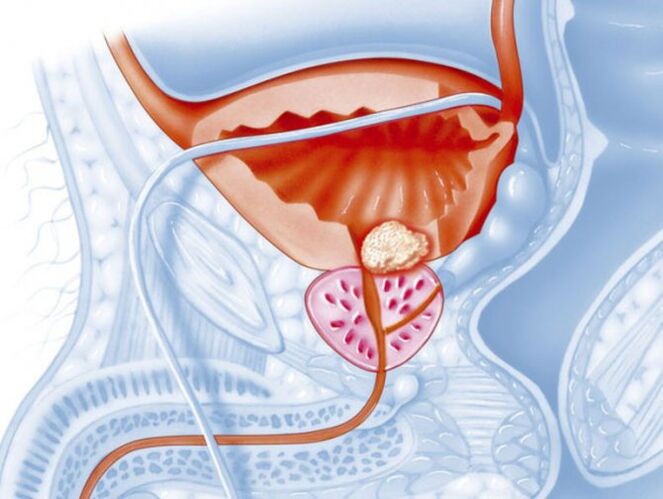
The most obvious symptoms associated with bacterial prostatitis include burning, pain, and cloudy discharge during urination.The smell of urine is unpleasant.General symptoms accompanying intoxication are observed: dizziness, weakness, nausea, fever.There is pain when ejaculating and sometimes there is blood.With chronic bacterial prostatitis, urination becomes more frequent and yellow or greenish discharge appears from the genitals.
Calculating prostatitis
With stone prostatitis, stones form in the ducts of the prostate.This form of the disease is very complicated and is accompanied by severe pain.The flocculants are of different origin: phosphates, oxalates, with mainly calcium and proteins.
There are two reasons for the formation of stones in the duct: stagnation of the contents of the gland and reflux of urine into the prostate.
Stagnation is associated with various factors that interfere with the normal flow of secretory fluid.Long-term sexual abstinence, hyperplasia, appearance of tumors blocking the fallopian tubes and a sedentary lifestyle lead to stagnation of secretions and disorders of the vascular and lymphatic systems.
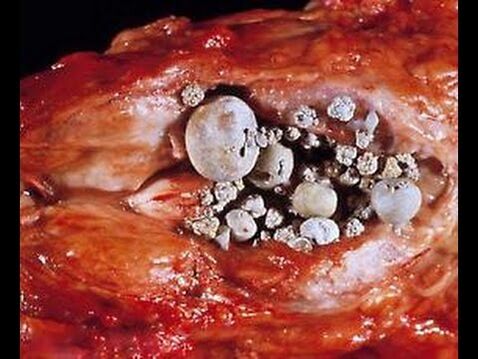
Urinary reflux is caused by a malfunction of the sphincter, which relaxes and urine flows in and out.The presence of stones and sand in the bladder contributes to the development of stones in the prostatic duct.They are carried there in the urine, settle and continue to grow, eventually reducing the amount of water excreted.Sphincter dysfunction can result from genital trauma and surgical intervention.
Initially, the stone form of prostatitis is asymptomatic;As stones develop, symptoms appear and increase.There is a feeling of pain in the lower abdomen or scrotum, spreading to the buttocks and lower back.Pain at rest is not observed and occurs only during physical activity, defecation and urination, as well as during sexual intercourse and while walking.
Large stones with sharp edges injure the canal during movement, leading not only to pain, but also to bleeding in urine and ejaculation.Wounds caused by stones are very susceptible to infection, then prostatitis caused by stones will turn into infection.
After about a month, with prostatitis caused by stones, the activity of the entire body is disrupted, the patient feels unwell, has insomnia, fatigue and irritability.
In the advanced stages of the stone form of prostatitis, after a complete diagnostic examination, drugs are prescribed and surgical treatment is performed to remove the tumors.
Congestive prostatitis
The stagnant type of prostatitis occurs due to stagnation of secretions in the prostate.Most often, such problems are observed in men who work sedentarily and do not play sports.Due to physical inactivity, blood circulation in the pelvic organs is impaired, the prostate does not have enough oxygen and nutrients, stagnation and inflammation occur.If nothing is done, the disease will become chronic and cause great discomfort.
Congestive prostatitis is provoked by irregular sexual life or its complete absence.In this case, men must release their secretions themselves, but should not abuse them because frequent masturbation can cause harm due to incomplete ejaculation.Many couples have found birth control methods for themselves such as interrupting sexual intercourse.This also leads to incomplete ejaculation and the development of inflammation.
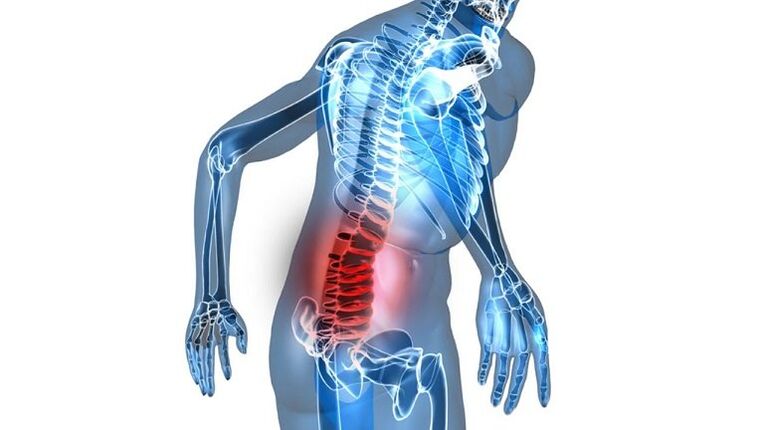
Sometimes the provoking factor is hypothermia or varicose veins.Abnormalities in the structure of the prostate can also cause stagnation.The pelvic area is constantly overheated and constant constipation adversely affects the production of secretions.Depending on the causative factors, there are several types of congestive prostatitis.
- Venous prostatitis.It occurs in people with varicose veins in the lower limbs.This disease affects all organs in the pelvis due to improper blood circulation.
- Congestion.Develops with partial emptying of the prostate.Overflow gradually leads to stagnation.
- Chronic.It develops when improper lifestyle becomes a habit.If nothing is done to change the situation, the disease will become chronic.It occurs more often in obese single men already in adulthood, when the medical history is complicated by concomitant diseases.At this stage, the prostate often increases in size, easily identified during examination.
- Infectious.It participates in the existing prostatitis when the infection enters the genitourinary system.
Symptoms of prostatitis appear due to difficulty urinating, pain in the groin, straining during bowel movements and weakened sexual activity.As a result of these symptoms, with various types of congestive prostatitis, poor health, irritability develop, performance decreases and sleep is disturbed.
Infectious prostatitis
Microorganisms that can cause signs of acute prostatitis include Escherichia coli, Staphylococcus aureus, Proteus, Eltirococcus, Klebsiella.There are bacteria that constantly exist in the body but in an inactive state, they do not lead to inflammation.When penetrating through the urethra into the mucous membrane of the prostate, the process of growth and reproduction of microorganisms begins, leading to inflammation.Indiscriminate and unsafe sex also creates conditions for harmful bacteria to enter the body.
Typical symptoms are pain in the scrotum, perineum, lower abdomen, lower back, pain and burning in the pelvic area.Difficulty urinating and acute urinary retention occur.In addition to the listed symptoms that accompany the infectious type of prostatitis, constipation, discharge from the urethra, bleeding and pain during ejaculation may occur.
This is a dangerous disease that, even in the early stages, can cause infection in sexual partners, leading to general blood poisoning or the development of pyelonephritis and cystitis.
Purulent prostatitis
Purulent prostatitis often develops when a bacterial infection enters the prostate.The disease occurs in four stages.
- Catarrhal.Develops after an acute respiratory viral infection, sore throat or flu.There is pus in the urine.There is a burning sensation when the bladder is empty.Patients note a weakening of potency.The process that accompanies this type of prostatitis involves the surface tissues of the prostate.
- Focus.This process extends to glandular tissue.The ducts swell, the outflow is interrupted.The gland increases in size due to the accumulation of pus in it, which drains out through urine.Body temperature increases.
- Parenchyma.Connective tissues are involved in this process, the swelling becomes even greater, and the temperature can reach 40 ° C. Unrelieved flare-up of pain in the anus and a false urge to defecate.
- Abscess.The most dangerous form of prostatitis.The temperature dropped sharply, there was a lot of pus and the pain was unbearable.This episode can be complicated by peritonitis and can be fatal.
Purulent prostatitis can be complicated by symptoms and pathologies such as paraproctitis, paracystitis, abscesses, and sepsis.Typically, these conditions are treated surgically and involve removing the pus pockets.
Diagnose
Diagnosis of various types of prostatitis is not particularly difficult and begins with collecting a history, which helps to more accurately understand the picture of this disease.Then a rectal examination is performed, which determines the size of the gland, determines the nature of the pain and detects the presence of swelling and stiffness.
For an accurate diagnosis, laboratory tests are prescribed:
- urine test;
- urine culture by AB sensitivity test;
- general blood tests;
- analysis of prostate secretion;
- biochemical blood test;
- rectal examination.
Additional diagnostics include instrumental research methods.First of all, an ultrasound is performed;If necessary, MRI and TRUS are additionally indicated.Recently, a new PET testing method has emerged;it is considered the most informative.
Inflammation treatment
Urologists treat all types of prostatitis.Traditional methods are good but only with a prescription and permission from your doctor.
First you need to find out the cause of the disease, and only then can you proceed with symptomatic treatment.
- Active antibacterial therapy helps cure prostatitis.Using antibiotics via injection is the most effective.
- For severe pain, analgesics and diuretics are prescribed.
- For constipation, laxatives are prescribed.
- For severe pain and difficulty urinating, novocaine blockers are used.
- A course of vitamin and immunomodulatory treatment is prescribed.
- It is necessary to adhere to a special diet, excluding spicy, salty and smoked foods.
- Bed rest is prescribed.
Local procedures include sitz baths with water at a temperature two degrees above body temperature.The enema is made with an anti-inflammatory herbal decoction with an added 1% anesthetic, while the contents are slowly introduced into the intestines and left there for as long as the patient can tolerate.
Physical therapy treatment also helps restore prostate function.Prostate massage is prohibited for acute prostatitis, but is recommended for chronic prostatitis.To restore metabolism, normal blood circulation and reduce swelling, UHF and microwave are prescribed.
If urination is delayed for a long time, a catheter will be installed.In some stages of the disease, surgical treatment is indicated to open the pus pockets and install a drainage system.
Treatment of acute prostatitis takes from several weeks to a month.A favorable outcome is often observed.If the disease has become complicated or has reached a chronic stage, the process will be complex, lengthy and may take several months.
During treatment, limit sexual activity and use prescribed personal protective equipment.
A medical physiotherapy device that helps cure prostatitis.It effectively eliminates the symptoms of prostatitis, can restore impaired sexual activity, eliminate pain, reduce swelling and inflammation.This device can be used at home for the treatment and prevention of diseases of the pelvic organs.
This device will relieve muscle tension, improve sperm production, strengthen blood vessels and prevent the development of other possible diseases of the pelvis.The device is used to treat prostatitis in men, is very easy to use, is equipped with an adjustment of heating and vibration modes, and runs on mains power.Compact size allows the device to be used in all conditions.
How to prevent the development of the disease?
Prevention of various types of prostatitis, like any other disease, is to maintain a healthy lifestyle, avoid bad habits and have a balanced diet.If you have been diagnosed with prostatitis, you should not neglect exercise.If any infection occurs, you should immediately consult a doctor to eliminate the cause and prevent the infection from spreading to other organs.
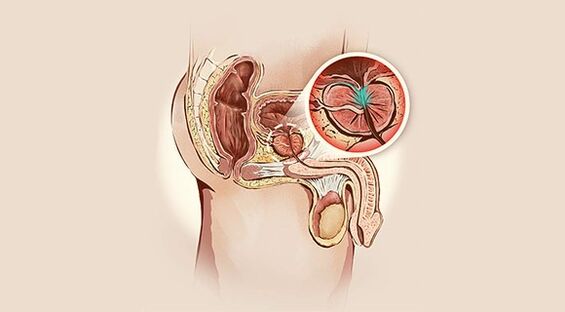
You should lead a decent lifestyle and have regular sex with a regular partner.It is important not to forget about personal hygiene of the genital organs and not to neglect regular preventive examinations by a urologist.If a man knows what prostatitis can be, and at the same time leads an inactive lifestyle, he needs to perform exercises that prevent the appearance of congestion in the pelvis.
Let's summarize
Depending on the cause and characteristics of the course, acute and chronic types of prostatitis are diagnosed.A separate group includes chronic pelvic pain syndrome.Acute prostatitis is characterized by clinical manifestations such as chills, fever, and pain.The chronic form may not manifest itself in any way or have a vague picture: difficulty urinating, pain in the pelvic area, when complications develop, can lead to impotence and loss of fertility.
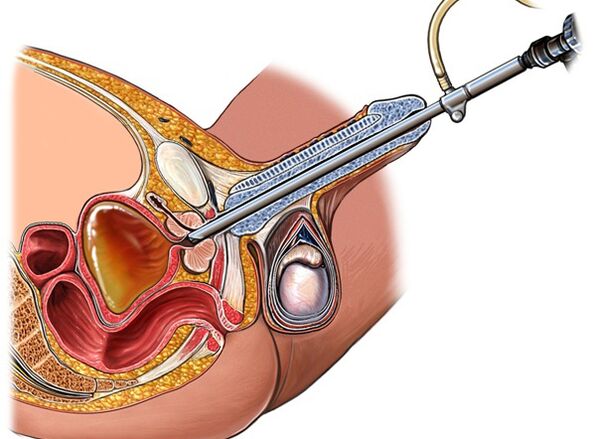
Acute prostatitis develops suddenly and is easily diagnosed.In contrast, chronic prostatitis occurs episodically, alternating periods of remission and exacerbation.In chronic cases, identifying the causative bacteria can cause certain difficulties.Foci of infection occurring in the genitourinary system cause complications in the form of pathology of anatomical organs adjacent to the prostate.Depending on the type of prostatitis diagnosed, the urologist will prescribe a distinct treatment regimen.

























